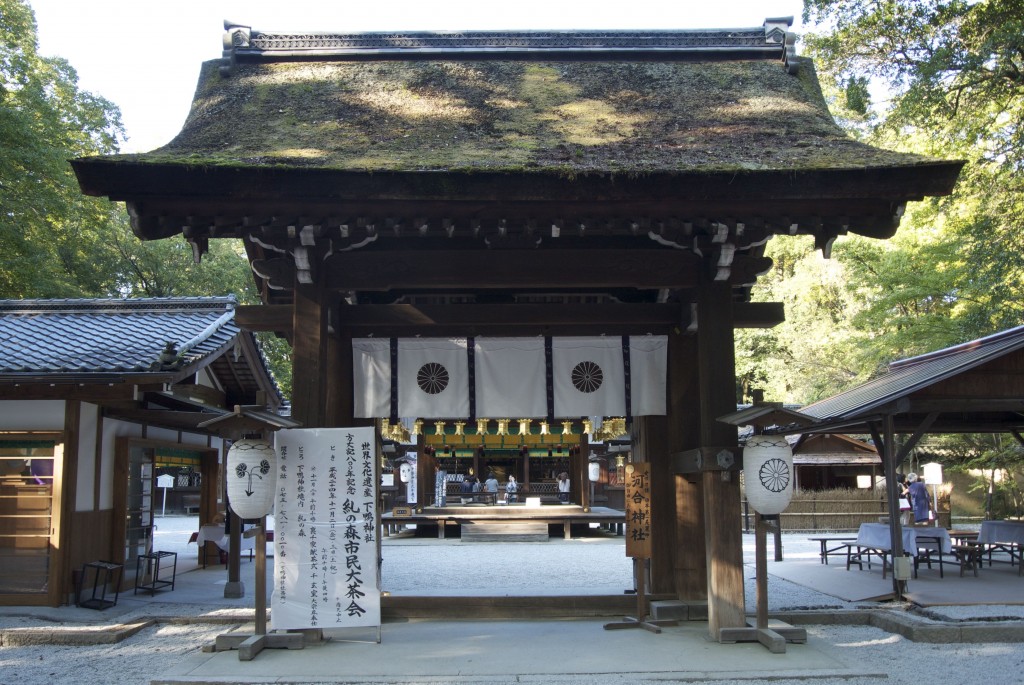
Entrance to the shrine
My local shrine at Shimogamo has been busily doing itself up in recent years to appeal to tourists, and I was impressed on visiting one of its subshrines, Kawai Jinja, at the transformation that had taken place. A new lick of paint, a small shop selling shrine artefacts, and lots of new signboards giving information about various aspects.
Its main selling point is that the kami specialises in women’s beauty, and the ema votive tablets are accordingly shaped like a mirror. Female visitors are invited to draw their face on the front and write down a request to become more beautiful. The ema are then displayed in front of the shrine.
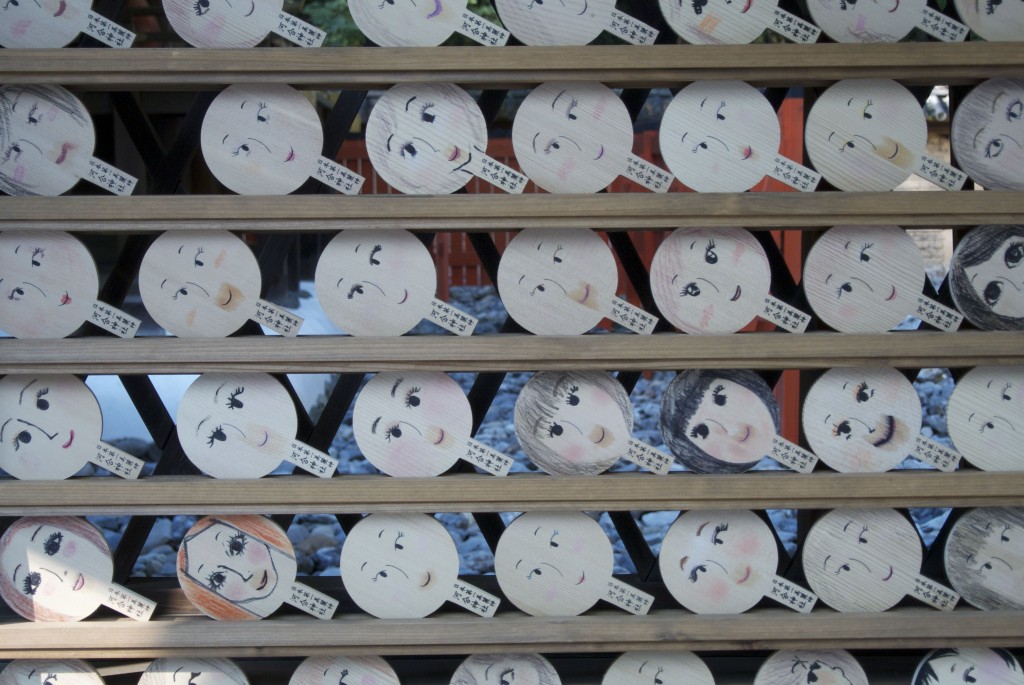
Self-portraits of women wishing to be more beautiful
Kawai Jinja also celebrates its connection with Kamo no Chomei (1153-1216), author of the wonderful Hojoki (Account of a Ten-Foot Square Hut). The shrine is currently celebrating the 800th anniversary of its publication, and the model of the hut in which Chomei lived has been adorned with a small reed fence.
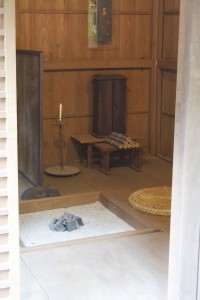
Inside the hut as it might have been in Chomei's day
Chomei was born the son of a high-ranking Shimogamo priest, but dropped out for reasons that are unclear. They are thought to centre around his resentment at being passed over for a position at Shimogamo he thought was rightfully his. He had a reasonably successful career as a poet, working on the Shinkokinshu imperial anthology, before deciding in his mid-forties to become a Buddhist recluse. For a while he lived in the village of Ohara at the foot of Mt Hiei, then moved to the hills of Hino south of Kyoto.
Chomei’s account of his life is delightful. Some seven centuries before Walden, he wrote of the joys of a solitary life close to nature. Transience and thoughts of death are never far from his mind. If I could quote from my book on Kyoto: A Cultural Guide...
The author describes his life in appealing terms. it must have been lonely and at times miserable, but he makes it sound idyllic. ‘The best friends one can have are flowers and moon, strings and pipe,’ he says of his solitude. He uses fresh rainwater for tea and soup; eats home-grown mushrooms, herbs and fruit; and for exercise, he wanders to a nearby temple, or makes sorties to places of poetical interest. He plays music which harmonises with the rhythms of nature. There is a heart-warming quality to the reclusive Chomei because of the pleasure he takes in small things. ‘My body is like a drifting cloud – I ask for nothing, I want nothing. My greatest joy is a quiet nap; my only desire for this life is to see the beauties of the seasons.’
This modest man ends his account by wondering if he has not become too attached to his simple lifestyle. ‘It is a sin for me now to love my little hut so much,’ he writes, ‘and my attachment to solitude may also be a hindrance to enlightenment.’ He had lived through the Gempei Wars when there had been fighting in the streets of Kyoto, but of all this he mentions not a word. It is as if such transient affairs are of little concern to him. Freed from ‘the dust of this world’, he was able to muse on other matters in his mountain retreat, and the reader is the beneficiary.
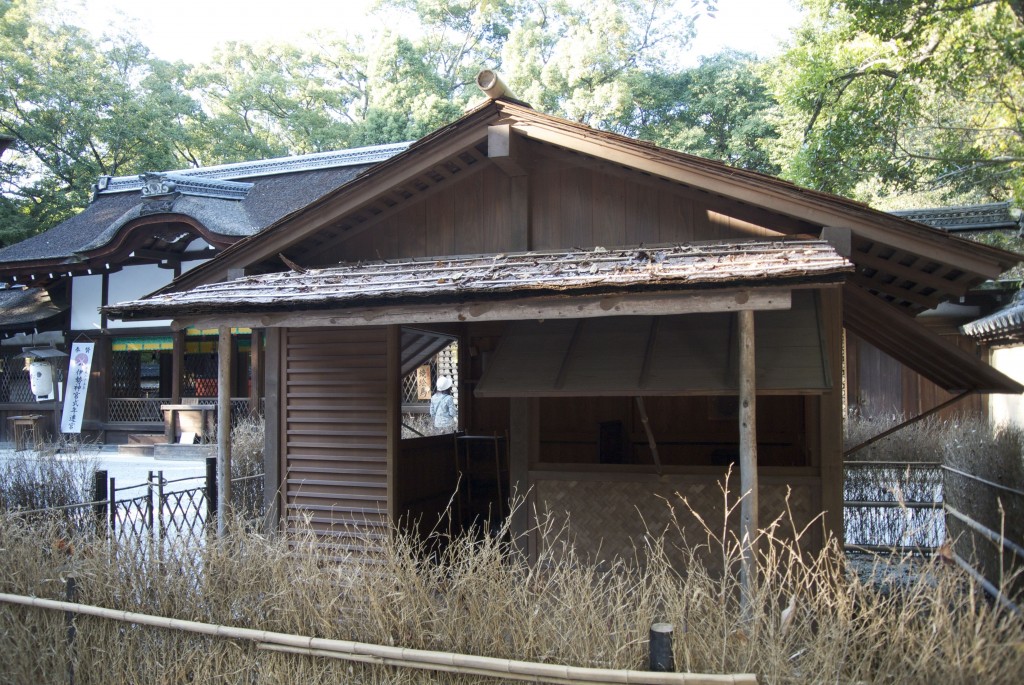
Model of Chomei's hut, set within Kawai Jinja
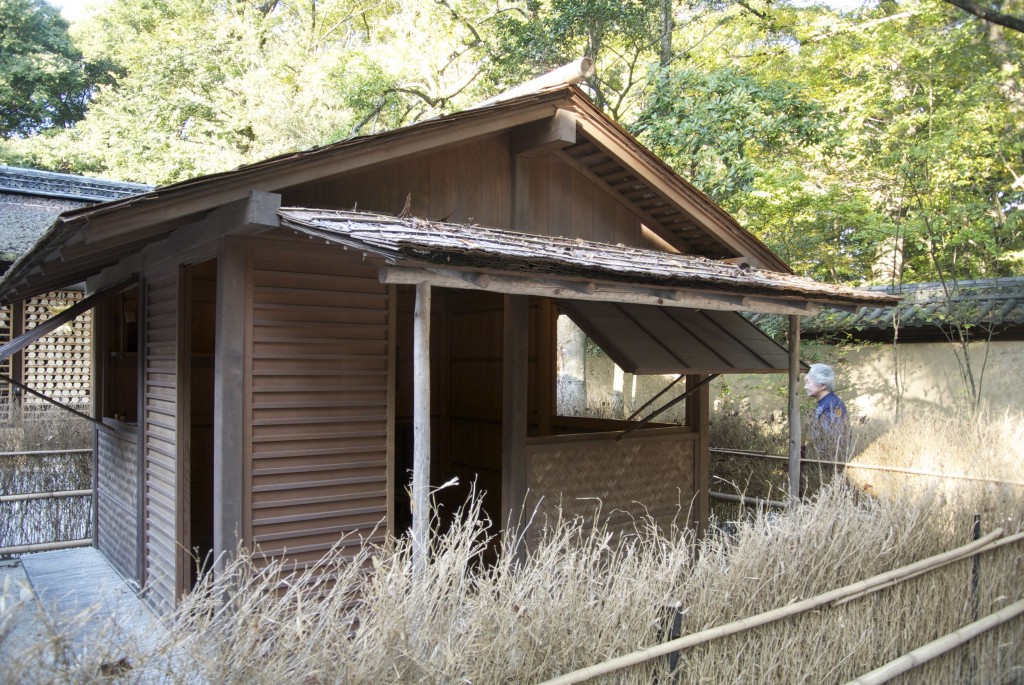
The Ten-Foot Square Hut, with fencing around it
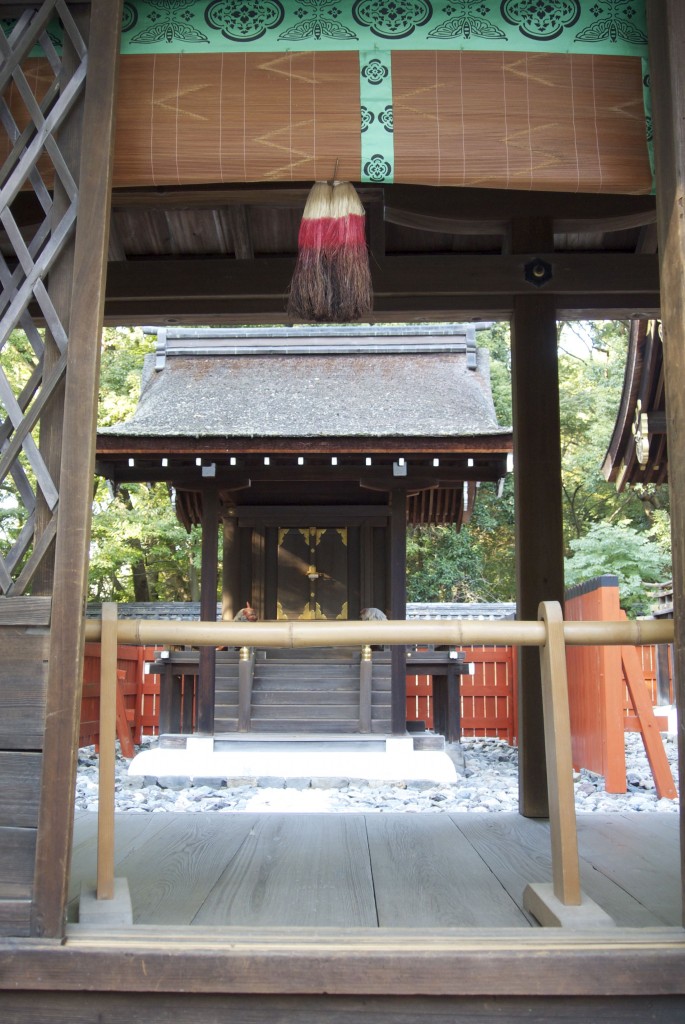
The sanctuary at Kawai Jinja has small shrines set on a bed of pebbles, as at Ise

Leave a Reply